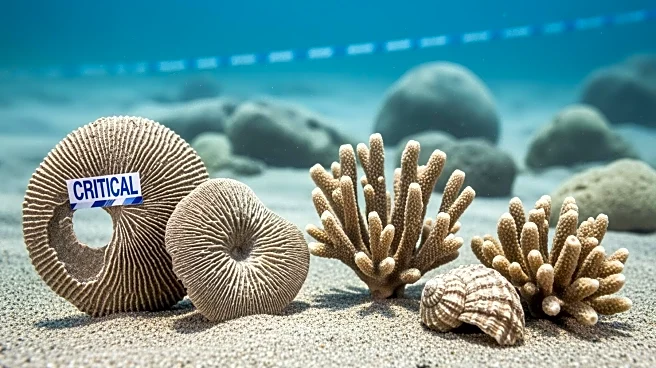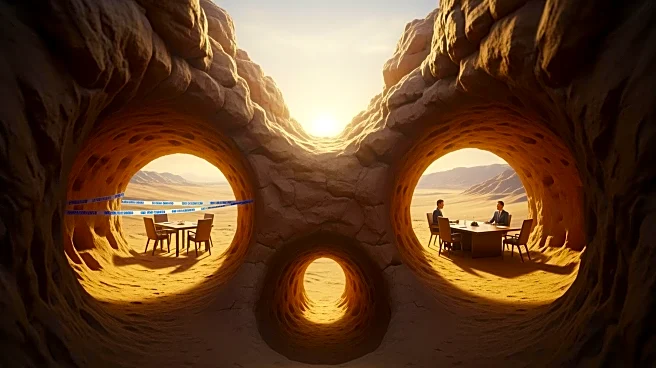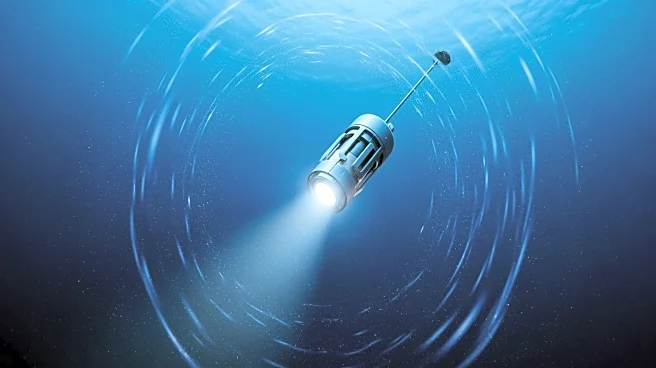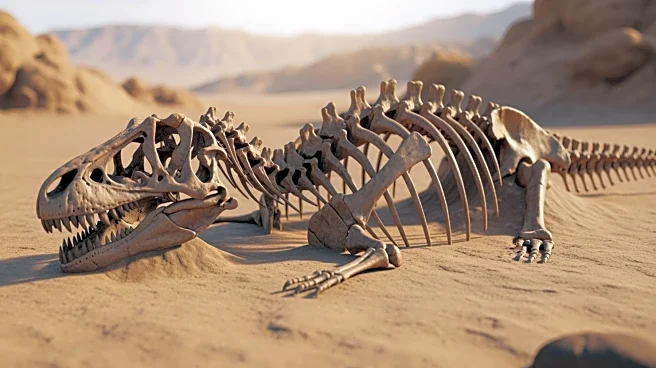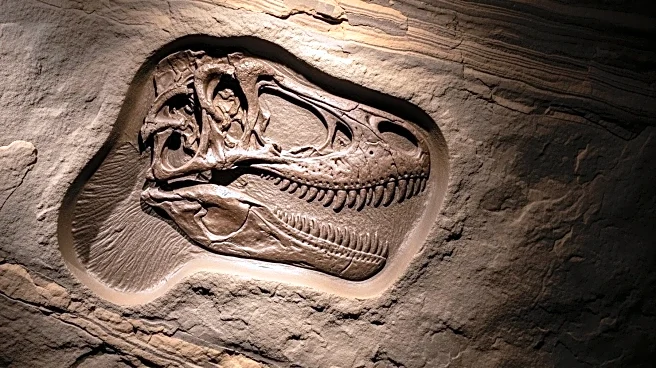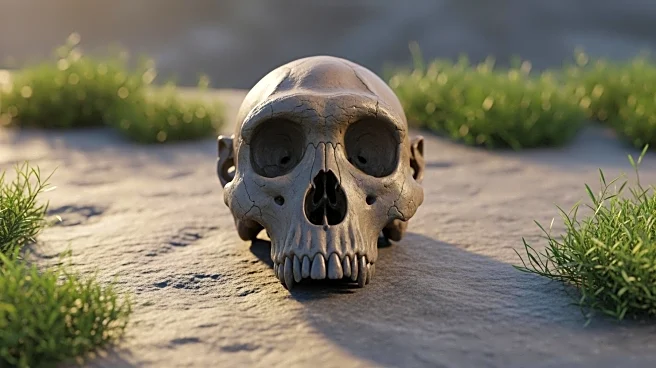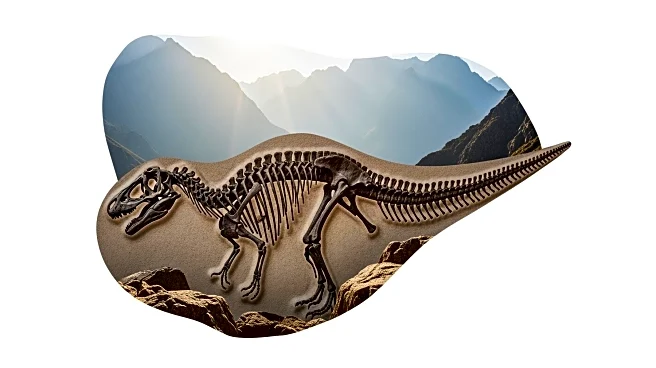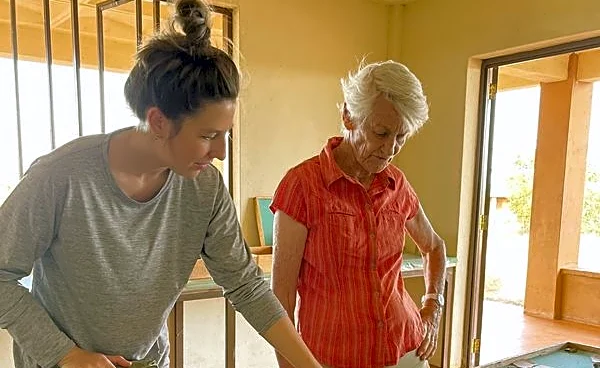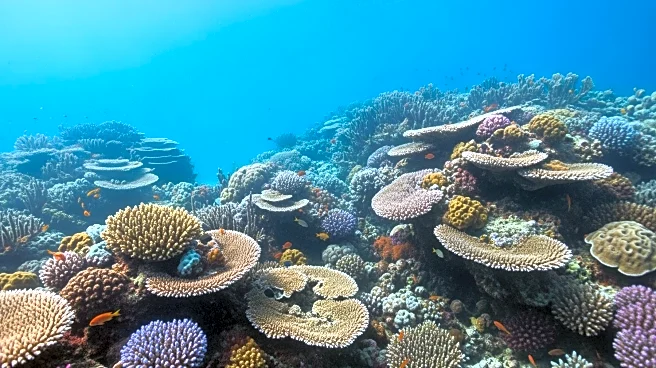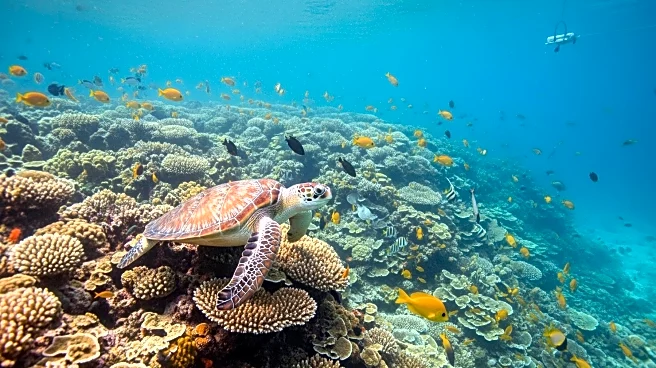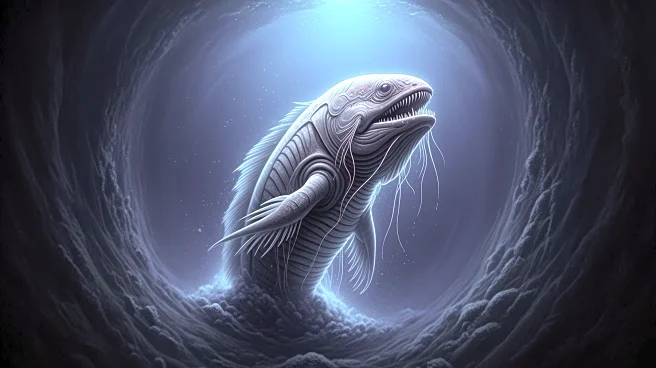What's Happening?
Recent research has uncovered 'ghost' fossils of early coccolithophores, indicating a significant diversification of marine calcifying organisms during the Triassic period. These findings suggest that
coccolithophores, a type of single-celled algae, existed much earlier than previously thought, with the earliest known fossils now dating back to the Middle Triassic. The study highlights the role of coccolithophores in marine biocalcification, a process crucial for the formation of calcium carbonate structures in marine environments. This discovery challenges previous assumptions about the evolutionary timeline of these organisms and suggests that coccolithophores were among the first plankton to develop biocalcification.
Why It's Important?
The discovery of these early coccolithophore fossils has significant implications for understanding the evolution of marine ecosystems. Coccolithophores play a vital role in the carbon cycle and marine primary production, contributing to the formation of coral reefs and other marine habitats. By pushing back the timeline of their existence, this research provides new insights into the early development of marine calcifying organisms and their impact on ocean chemistry and ecosystems. This could influence current models of marine biodiversity and the historical understanding of oceanic carbon cycles.
What's Next?
Further research is likely to focus on exploring other potential 'ghost' fossil sites to better understand the early history of coccolithophores and their role in marine ecosystems. Scientists may also investigate the environmental conditions that facilitated the diversification of these organisms during the Triassic period. This could lead to a reevaluation of the evolutionary history of other marine calcifiers and their contributions to past and present marine environments.
Beyond the Headlines
The study of 'ghost' fossils opens new avenues for paleontological research, offering a method to uncover hidden fossil records that traditional techniques might miss. This approach could reveal more about the evolutionary history of other ancient organisms and their interactions within early ecosystems. Additionally, understanding the early diversification of coccolithophores could provide insights into how marine life might adapt to current and future changes in ocean chemistry and climate.
